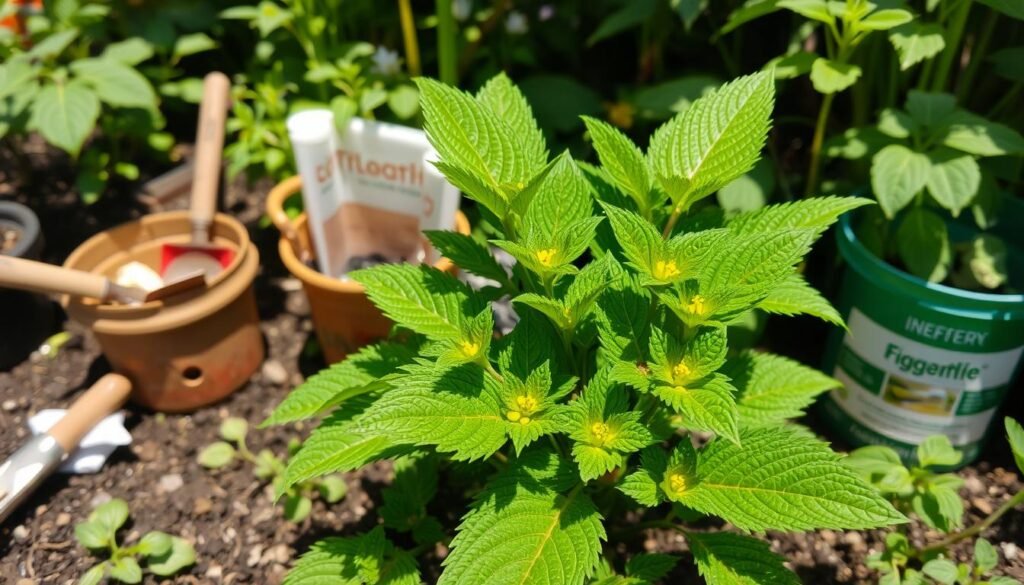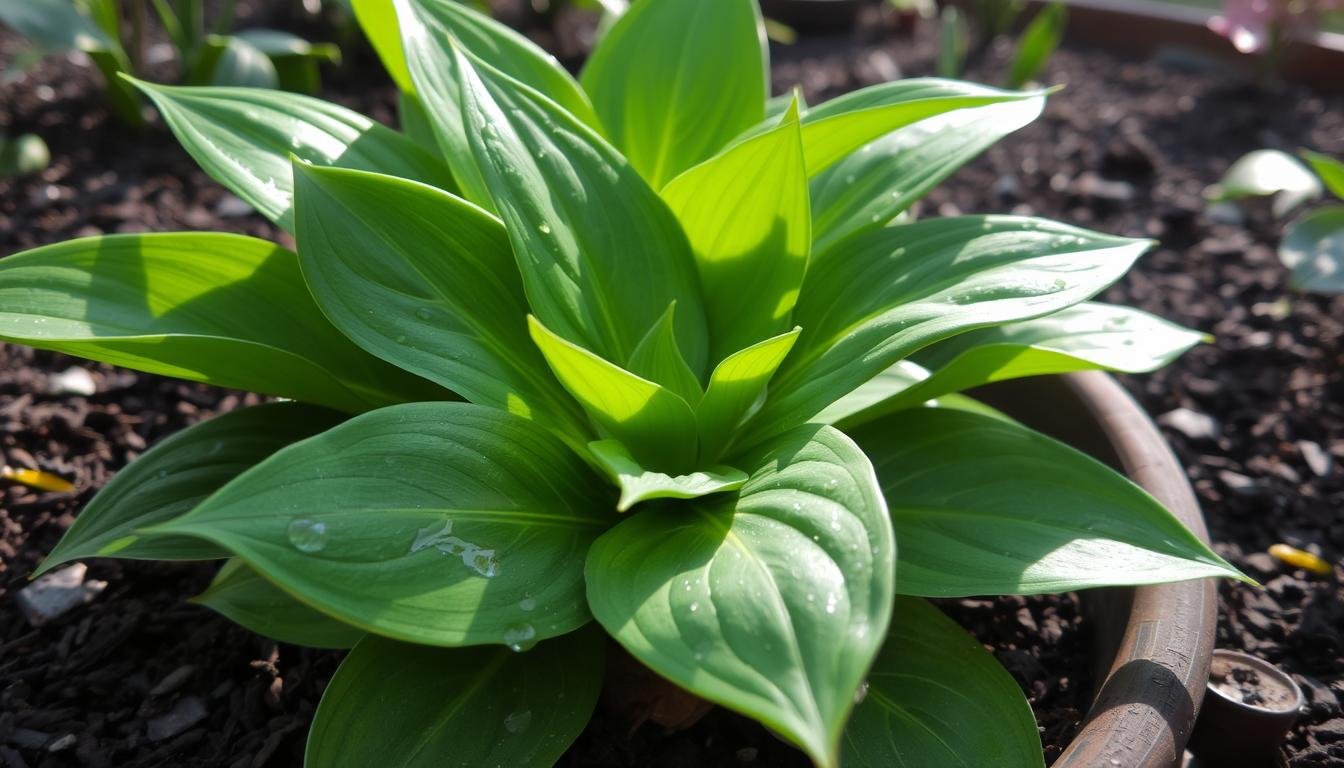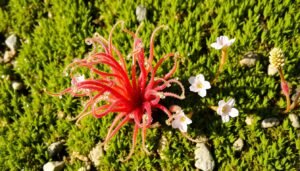The toothache plant, known as Spilanthes acmella, is a special herb. It’s known for its natural pain-relieving properties. This colorful plant not only beautifies your garden but also helps with dental care naturally.
In this article, you’ll learn how to care for the toothache plant. You’ll find out the best growing conditions, how to propagate it, and how to use its medicinal benefits. With the right care, you can grow this plant and enjoy its soothing effects for cooking and health.
Table of Contents
Introduction to the Toothache Plant
The toothache plant, known as Acmella oleracea, is also called electric daisy, jambu, and buzz button. It comes from Brazil and is loved by herbal medicine fans in the U.S. Here, it grows as an annual, but in warmer places, it can live longer.
This plant has a long history in treating toothaches. Its leaves and flowers have spilanthol, which numbs the mouth. It also has flavonoids that help reduce pain. This makes it a great choice for those looking for natural relief.
It’s fun to grow your own toothache plant. The seeds sprout in 7 to 14 days. Plant them 12 to 18 inches apart for best growth. It likes full sun but can handle partial shade and needs rich, well-drained soil.
But it’s not just for toothaches. Chewing the flowers can help with throat pain and make your throat feel cool. The toothache plant is a unique choice for those who want natural remedies in their garden and health routine.
Understanding the Unique Properties of the Toothache Plant
The toothache plant, known as Spilanthes acmella, is special because of spilanthol. This natural compound numbs the mouth when you chew the flower buds. It’s a favorite for those looking for natural tooth pain relief.
For centuries, it has helped with toothaches and gum infections. It’s a key part of plant-based dental care.
This plant blooms in bright colors like orange, red, and yellow. It has blue-green leaves and grows up to 18 inches tall. It loves full sun and well-drained soil.
The toothache plant is not just for medicine. Chefs use its leaves in salads and soups. It adds a unique taste. Herbal remedies for tooth pain and cooking make it a great plant to have.
The plant is safe but might make your mouth tingle. This makes it great for natural health. It helps with canker sores and sore throats.
For gardeners, it’s easy to care for. Just trim it often and keep it in the right conditions. You can grow more by planting seeds or cuttings. The toothache plant has a long history and many uses.
- Transform Your Backyard Into an Italian Garden Paradise
- Garden Pond Backsplash Ideas: Transform Your Water Feature
- Front Yard Succulent Garden Ideas: Create a Desert Oasis
- Create Your Perfect Indoor Herb Garden Planters
- DIY Herb Garden From Pallets: Easy Growing Guide
Tooth Ache Plant Care: Essential Growing Conditions
To care for the toothache plant, knowing the right growing conditions is key. Understanding the best temperature and soil needs helps the plant grow strong. This ensures you get the most from using it for organic dental care.
Optimal Temperature Range for Growth
The toothache plant loves warm weather. It grows best in temperatures between 65°F to 85°F. If it gets too hot or cold, it can struggle to grow well.
It’s also important to remember that toothache plants can’t handle frost. In cold areas, they grow as annuals. So, keep your plant in a warm, stable spot to help it thrive.
Soil Requirements for Healthy Growth
The toothache plant needs soil that drains well and has organic matter. This kind of soil helps the plant absorb water and nutrients better. When planting, make sure to space the plants 1-2 feet apart.
This allows for good airflow and helps the plants get what they need. Good soil also makes the plant’s leaves bright and its flowers fragrant. This boosts your organic dental care routine.

Sunlight Needs of the Toothache Plant
Knowing how much sunlight the toothache plant needs is key for its health. This tropical plant is known for its dental health benefits. It grows best in direct sunlight. For the best results, give it 6 to 8 hours of full sun daily.
Getting enough sunlight boosts the plant’s health. It also makes its herbal remedies for tooth pain more effective.
Importance of Full Sun Exposure
Full sun is vital for the toothache plant’s health. It does best in sunny spots, especially in zones 10 and warmer. Place your plant where it gets sunlight all day.
This helps it grow strong, bloom well, and be more medicinal. Keeping it near south-facing windows is perfect for its health and herbal benefits.
Effects of Insufficient Light
Not enough sunlight harms the toothache plant. It can grow too tall and not bloom much. This reduces its value as a dental health plant.
Poor light also affects its ability to thrive and make herbal treatments. For the best health and benefits, ensure it gets plenty of sunlight.

Watering Guidelines for the Toothache Plant
Watering is key to your Toothache Plant’s health. These plants do well with regular watering. This keeps the soil moist but not too wet. Paying attention to your plant helps you care for it better.
Frequency and Method of Watering
Water your Toothache Plant about once a week. Start with 1 inch of water weekly, or 0.5 cups every 9 days for a 5-inch pot. Check the soil moisture by sticking your finger in it. If it’s dry, it’s time to water.
This routine helps your plant grow strong. It lets the Toothache Plant thrive.
Signs of Overwatering and Underwatering
Good tooth ache plant care means watching for water stress signs. Too much water can turn leaves yellow, showing root rot. Too little water makes your plant wilt.
Spotting these signs early helps you adjust your watering. This keeps your Toothache Plant happy and healthy.

Feeding and Fertilizing Your Toothache Plant
Proper fertilization is key to your toothache plant’s health. The right approach boosts its growth and medicinal qualities. This is perfect for organic dental care.
Choosing the Right Fertilizer
For the best care, use organic fertilizers. Fish emulsion or seaweed solutions are great. They give the plant essential nutrients for health.
These fertilizers make the soil rich. They help the plant grow strong. This leads to more leaves and flowers.
Optimal Feeding Schedule
Follow a feeding schedule for the best results. Use your chosen organic fertilizer every 1 to 2 months when the plant is growing. This keeps the soil rich and helps the plant make more medicine.

Propagation Techniques for the Toothache Plant
The toothache plant is a fascinating addition to your garden. It’s also easy to propagate. You can start from seeds or use stem cuttings. Both methods work well for toothache plant care.
How to Start from Seeds
Starting the toothache plant from seeds is simple. Here’s how to do it:
- Choose quality seeds.
- Prepare seed trays or small pots with sterile soil.
- Broadcast the seeds on the soil surface about six weeks before the last frost date.
- Keep the soil moist and ensure it gets enough sunlight.
- Germination should happen in 7 to 14 days.
Taking Stem Cuttings for New Plants
Stem cuttings are another great way to grow more plants. Follow these steps:
- Choose a healthy stem from an existing toothache plant.
- Cut a section that’s 6 to 8 inches long.
- Dip the cut end in rooting hormone to help it root faster.
- Put the cutting in a pot with suitable sterile soil.
- Water the soil a bit and cover the pot to keep it humid.
These easy propagation methods will help you care for your toothache plant. You’ll enjoy its medicinal and culinary benefits. Watching your plants grow is a joy!
| Propagation Method | Time to Establish | Care Requirements |
|---|---|---|
| Seeds | 7-14 days | Moderate water, full sun |
| Stem Cuttings | 2-4 weeks | Moderate humidity, warm temperatures |
Harvesting and Using the Toothache Plant
The toothache plant, or Spilanthes, is full of benefits. You can enjoy these by harvesting and using it wisely. Knowing when to pick the leaves and flowers is key. This makes it great for both health and cooking.
When and How to Harvest Leaves and Flowers
Harvest the leaves and flowers when they’re about three inches tall. Make sure to leave six inches of foliage to help the plant grow. The flowers are best when fresh because they have lots of spilanthol, which helps with pain.
They bloom from mid-June to September. This is the perfect time to pick them.
Medicinal and Culinary Uses of the Toothache Plant
The toothache plant is known for its healing powers. Chewing on the flowers can ease toothaches right away. It’s also used to fight off infections and even malaria.
But it’s not just for health. The plant is also tasty in food. You can use it in cocktails, salads, and more. It adds a special flavor. People in China, Tibet, and Brazil love using it in their cooking. It’s great for adding spice to your meals or for health benefits.
Common Pests and Problems
Keeping your toothache plant healthy can be tough because of pests and care issues. Spotting pests early is key to keeping your plant happy. It’s important to know how to deal with these problems to keep your plant healthy.
Identifying and Managing Pests
Pests like spider mites, mealybugs, and aphids can harm your toothache plant. Each pest has its own signs:
- Spider Mites: Look for webbing and speckled leaves as indicators.
- Mealybugs: Recognizable by cottony clusters on the plant, they can be removed with alcohol-dipped cotton swabs.
- Aphids: These tiny insects cause distorted leaves and can be controlled using water sprays or neem oil.
To keep pests away, make sure your plants have enough light and air. Regular checks can catch problems early. Try using marigolds to naturally keep pests off.
Troubleshooting Plant Care Issues
Fixing problems quickly is crucial for your toothache plant. Too much water turns leaves yellow, while too little makes them shrivel. Water deeply but not every day. Use soil that drains well to avoid root rot.
Too much sun can burn leaves, while not enough makes them stretch out. Find the right balance to keep your plant healthy. Keeping your plant area clean helps prevent pests.
| Pest | Signs | Management Techniques |
|---|---|---|
| Spider Mites | Webbing, speckled leaves | Increase airflow, treat with insecticidal soap |
| Mealybugs | Cottony clusters | Alcohol swabs, insecticidal soap |
| Aphids | Distorted leaves | Water spray, neem oil, introduce ladybugs |
| Fungus Gnats | The presence of tiny flies | Allow soil to dry out, use sticky traps |
| Scale Insects | Sticky residue on leaves | Cotton swabs with alcohol, neem oil |
Conclusion
Caring for the toothache plant is rewarding and helps with dental health. Knowing how to grow and harvest it is key. This plant is a natural way to treat toothaches.
The toothache plant is full of compounds that help with health issues. Adding it to your garden brings beauty and health benefits. Using its leaves can also save you money on dental care.
More people are looking for natural health solutions. Adding the toothache plant to your garden is a step towards a healthier life. It’s great for cooking and for health, making it a valuable addition to your dental care routine.



